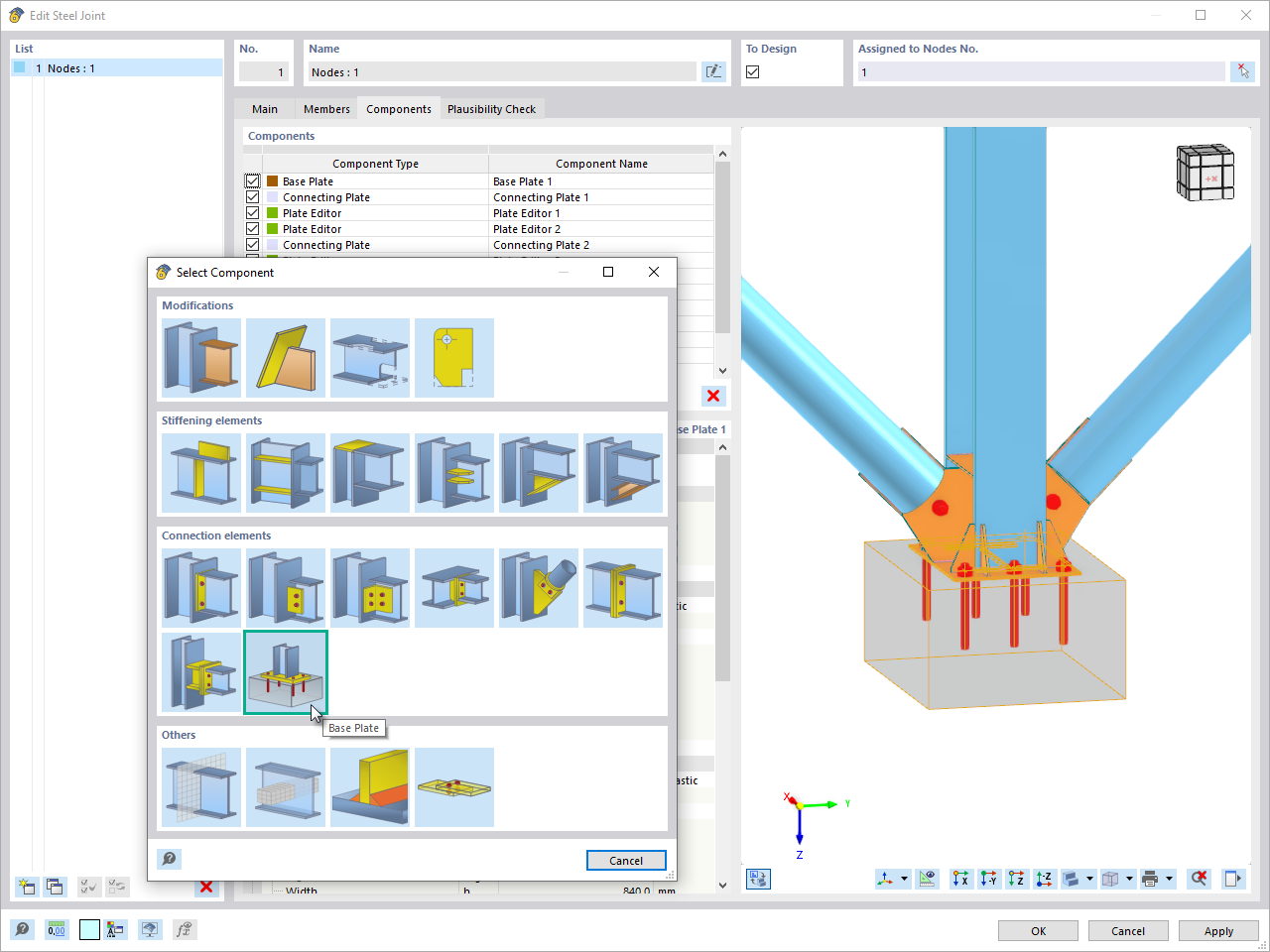Modifying the stiffness matrix allows engineers to tailor the behavior of structural elements to meet specific design requirements or simulate unique conditions. This article outlines the various approaches available in RFEM 6 for modifying surface stiffness, emphasizing their application and the impact on structural analysis.
Understanding Stiffness Matrix
The stiffness matrix represents the relationship between applied forces and resulting displacements in a structure. Modifying its components enables engineers to influence how the structure responds to loads. The primary methods in RFEM 6 for surface stiffness modification include:
1. Total Stiffness Modification
This approach involves uniformly scaling all elements of the stiffness matrix by a single factor k (Image 1), effectively increasing or decreasing the overall stiffness of the surface. It is particularly useful for proportional adjustments across the entire surface. The primary applications of this approach include:
- Making global adjustments to simulate surfaces with increased or reduced stiffness.
- Simplified modeling of surfaces with consistent material properties.
2. Partial Stiffness, Weight, and Mass Modifications
In this method, specific components of the stiffness matrix, as well as associated weights and masses, are adjusted individually (Image 2). This allows for targeted modifications while keeping other properties unchanged, providing more precise control over the structural behavior.
To apply the desired modifications correctly, it is crucial to identify the specific matrix terms to focus on. This requires an understanding of which terms correspond to bending and torsional stiffness, shear stiffness, membrane stiffness, and eccentric stiffness. To assist you with this, we have provided Image 3.
Hence, by defining the kb factor, for example, you are modifying all bending and torsional stiffness matrix terms in the following manner:
One example of this application is to address creep and shrinkage effects on a composite steel-concrete deck. In such structures, long-term effects like creep and shrinkage in the concrete component lead to a reduction in the deck's bending and torsional stiffness. To account for these effects, the bending and torsional terms in the surface stiffness matrix (see Image 2-4) can be uniformly scaled down by a factor (that is, kb) representing the time-dependent reduction in stiffness.
The same principle applies when modifying the relevant factors for shear stiffness, membrane stiffness, eccentric stiffness, and weight. Targeted adjustments, such as modifying bending stiffness while maintaining shear and membrane properties, or vice versa, enable:
- Simulating the behavior of complex multi-layered or composite materials.
- Addressing creep and shrinkage effects in composite steel-concrete decks
3. Element-Specific Stiffness Modification
This method allows for the adjustment of individual elements within the stiffness matrix by applying unique factors to each one (Image 5). For instance, you can independently modify the factors associated with bending stiffness, such as kD11 or kD22, allowing you to control the bending stiffness separately along the x- and y-axes. One practical application for this is a composite plate with fibers predominantly oriented along the x-axis, resulting in significantly higher stiffness in that direction. To account for this anisotropic behavior, the bending stiffness term kD11, which corresponds to D11 in the surface stiffness matrix, can be increased while keeping other terms unchanged. This level of control is not achievable with the partial stiffness modification method, as it applies stiffness adjustments uniformly to all bending- or torsion-related terms.
This level of detailed modification is particularly useful for:
- Simulating complex material behaviors
- Addressing localized effects within the structure
4. Standard-Specific Stiffness Modification: ACI 318-9 & CSA A23.3-19
In RFEM 6, surface modifications can be applied in accordance with Section 6.6.3.1.1 of ACI 318-19 and Clause 10.14.1.2 of CSA A23.3-19. The software effectively incorporates stiffness reductions for concrete members and surfaces across various element types. Options available include cracked and uncracked walls, flat plates, slabs, beams, and columns. The program uses multiplier factors directly sourced from Table 6.6.3.1.1(a) and Table 10.14.1.2. For more details, refer to the following knowledge base article:
KB 1732 | Concrete Stiffness Modification in RFEM 6 According to ACI 318-19 and CSA A23.3:19
Conclusion
Adjusting the surface stiffness matrix enables engineers to customize the behavior of these structural elements to satisfy specific design needs or replicate unique conditions. However, implementing these modifications demands careful evaluation of the structural context and desired objectives, as alterations to the stiffness matrix directly affect the distribution of stresses and deformations within the structure. Advanced structural analysis software, including that developed by Dlubal, offers tools such as the “Surface Stiffness Modification” option to efficiently carry out these adjustments, streamlining the design and analysis process.





























































_1.jpg?mw=350&hash=ab2086621f4e50c8c8fb8f3c211a22bc246e0552)



